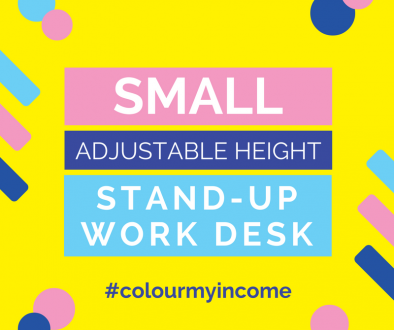Affirmations – Why and How They Work
Affirmations or personal positive sayings repeated daily have been often used, by the New Age-Positive Thinking community as the prescription to a significant number of issues, ranging from low self esteem, to feelings of lack, to building better relationships and living a more abundant life.
Do Affirmations Really Work?
None, however, have made the process of affirmations more mainstream than the hit movie, The Secret, and yet in its own way, this too has contributed to the bad press that the idea of affirmations has continued to pick up over the years.
All success coaches, motivational speakers and self-help gurus (from Jack Canfield to Norman Vncent Peale, Louise Hay to Oprah) invariably reach a point within their programme offerings in which they insist that affirmations are a vital part of success (however you may define that to be). In repeating one or more affirmations daily the idea is that, by giving voice to your inner desires, by reprogramming your beliefs verbally, you can bring about the change you wish.
The thought process is not difficult to understand: As the world we live in, is based on the reality that we have built up in our minds with our own perceptions, it then follows that we can continue to ‘reprogram’ our minds and our thoughts to suit our desires.
It may be hard to believe that turning around the circumstances of ones life can be as simple as continuously repeating a positive message over and over again, and yet, if this were not the case, why would it be such a popular recommendation?
The History of Affirmations
While it may seem that affirmations are a fairly modern phenomenon, going back in time, we find that repeating a mantra was standard method in meditation practises. A mantra, typically ranging from one to three Sanskrit words, offered direct messages that helped focus on certain beliefs or principles. For e.g. Sat-Chit-Ananda simply means Existence, Consciousness, Bliss.
In the late 1800s to early 1900s, meta-physics developed a following and it is here that we find more ‘thought leaders’ of the day start turning to using ‘words’, or ‘Affirmations’ to focus on the goal or the ideal.
Florence Scovel Shinn’s first book The Game of Life and How to Play It (first published in 19225), provides a fascinating account of how affirmations can and were used all that time ago. The Power of the Spoken Word first published in 1945 gives a whole range of positive affirmations, many of which are still applicable today.
So while we know that affirmations have been in used for centuries, back to the question, do affirmations really work?
Logic would tell us that if something were not successful it would have stopped being used or circulated. The other possibility would be that, the people recommending affirmations have something to gain by insisting affirmations work – hence the popularity of it. And yet, neither seems completely true.
Affirmations, as will be attested by many, do work, but with a proviso.
Feeling the Words
Simply repeating words, parrot fashion, does not change anything. The thing that really does change circumstances is the belief and emotion behind the affirmation. Hence the reason why affirmations are almost always strongly related to visualisations (visioning as some might say).
It really is less about the words and more about the feelings behind what is said.
An example would be in repeating an affirmation about wealth and abundance, we would have to get in to the state of mind in which we are able to perceive and feel the wealth and abundance in our lives, even if it is simply a vision in our minds eye or a feeling surrounding us. It is really this ‘perception’ of what reality can be, that is just as important or perhaps even more important than the spoken affirmation itself.
Continuous Thoughts
The other really important aspect of using affirmations is that as far as possible, it needs to be a stream of continuous thought.
It does not help to start the day of saying and thinking a positive thought, only to dwell on all the negativity two hours later. Granted, this will take a lot of discipline and practise, but over time, you will find this process becoming easier.
In essence it is really about ‘say what you mean’ or ‘think about what you wish for’ as opposed to ‘complain about what’s bothering you’ and ‘think about all that you still lack’.
Affirmations Coupled
In essence, the power of affirmations are real and true, however, on their own, the words don’t mean much. Coupled with the emotions, visualisations and continuity of thought, affirmations really do help move us in the direction of all that we seek.
We have been particularly inspired by Florence Scovel Shinn’s The Game of Life and How to Play It which explains how and why affirmations work.
Your Word is your Wand also by Florence Scovel Shinn, provides numerous examples of affirmations.
How to Choose an Affirmation
A little considered, but really important aspect of first selecting, then repeating an affirmation is that the affirmation has to sound and feel good to you. In essence, it needs to resonate.
You will find that there are some phrases that may sound and feel ‘not right’ or ‘corny’ while others seem to just sit and fit right in. Simply choose one that works best for you.
Simply googling Affirmations will bring up a huge list of websites and options on google.
However if you prefer reading a book try Affirmations Your Passport to Happiness (8th Edition).
If you’re new to affirmations, or perhaps would like to read more about how affirmations have helped change the circumstances in different lives, try our very own edition of The Game of Life and How to Play It.
We have specially selected and highlighted the most inspiring sections and we have even created some of the most amazing graphics of the affirmations that you can print off and put up to remind you of what you consciously think about. Take a peek here.
Over to you…
Do you have a favourite affirmation? Have you found affirmations to be effective? Do you have questions on how to use affirmations?
We would love to hear from you, whether it’s comments, questions, thoughts or ideas. Feel free to leave a comment below and share this with your friends. Click To Tweet.



January 15, 2014 @ 10:34 pm
I loved this post! Affirmations go far beyond just saying the words. Yes, as you pointed out, the emotions behind the affirmations are a huge component and you said it so beautifully!
I also believe that working on the subconscious with our internal programming is important as well. If you are saying an affirmation with your conscious mind and that has control of say, 5% of the mind, that leaves the other 95% in the subconscious to have more muscle over that thought. It would depend on how strong that subconscious agrees or disagrees with the affirmations. Thankfully there are many tools, that can easily be used, for changing that subconscious belief 😉
This topic is so dear to me! Thanks so much for sharing. I hope people will catch on, that this can all work wonderfully, if we just put the right momentum and emotion behind it.
January 16, 2014 @ 3:09 pm
Hello Melissa! Thanks so much for dropping by. What you say is so true about the conscious and sub-conscious mind and how one programs the other, and putting in the right momentum and emotion is truly where the challenge lies.
January 20, 2014 @ 9:06 pm
My favourite affirmation of the moment came from a course I took with Helene Van Manen (she has a fab blog at http://iretreat.org/ ). It is “I have faith in the future I cannot see” and I’ve been saying it when I’m working hard but need a little more faith that it will all work out in the end. For me it’s a reminder rather than a way of re-programming myself. That’s to say it wouldn’t work if I hadn’t already done some work on releasing the blocks that were in my way.
January 21, 2014 @ 10:22 am
Hi Helen, Great to see you here. It’s so very true that getting blocks out of the way, pave an open path for much good and abundance to flow in. Fantastic work on your part!
6 Things to Try When You Don’t Know What Else To Do | Be Happy HQ
May 20, 2014 @ 9:35 am
[…] one takes practise, but much like affirmations, the more you repeat whatever it is that you want to believe, over time, you will convince yourself […]